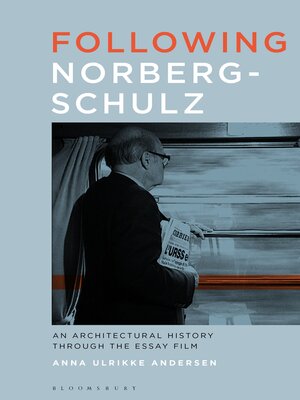Following Norberg-Schulz
ebook ∣ An Architectural History through the Essay Film
By Anna Ulrikke Andersen

Sign up to save your library
With an OverDrive account, you can save your favorite libraries for at-a-glance information about availability. Find out more about OverDrive accounts.
Find this title in Libby, the library reading app by OverDrive.



Search for a digital library with this title
Title found at these libraries:
| Loading... |
This book examines the 'window' in the life and work of the seminal architectural thinker Christian Norberg-Schulz (1926 – 2000). It draws new attention to his architectural designs and re-examines his acclaimed theoretical work on the phenomenology of architecture and place within the context of a biography of his life, linking him with other historical figures such as Helen Keller and Rainer Maria Rilke, and framing him within the modernist tradition of the latter.
Taking a novel, experimental approach, the book also explores the potential of the essay-film as an innovative new approach to producing architectural history. Bridging archival research and artistic exploration, its ten chapters, written by an architectural historian who is also a film-maker, are each accompanied by a short documentary film, hosted online and linked from within the chapter, which use the medium of film to creatively explore and delve deeper into little-known aspects of Norberg-Schulz's theory of genius loci and the phenomenology of architecture. The book questions what it means to 'follow' those who came before, exploring the positionality of the architectural historian/filmmaker.
Offering an insightful account of the life, work, and theory of a key thinker, Following Norberg-Schulz is also essential reading for those interested in practice-led research methodologies, particularly in the practice of film-making and the essay film, providing a highly innovative example of scholarly research which bridges the text-film gap.
Taking a novel, experimental approach, the book also explores the potential of the essay-film as an innovative new approach to producing architectural history. Bridging archival research and artistic exploration, its ten chapters, written by an architectural historian who is also a film-maker, are each accompanied by a short documentary film, hosted online and linked from within the chapter, which use the medium of film to creatively explore and delve deeper into little-known aspects of Norberg-Schulz's theory of genius loci and the phenomenology of architecture. The book questions what it means to 'follow' those who came before, exploring the positionality of the architectural historian/filmmaker.
Offering an insightful account of the life, work, and theory of a key thinker, Following Norberg-Schulz is also essential reading for those interested in practice-led research methodologies, particularly in the practice of film-making and the essay film, providing a highly innovative example of scholarly research which bridges the text-film gap.






